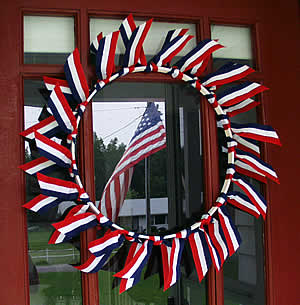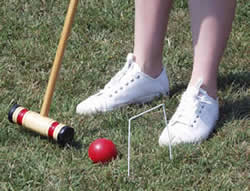The Lewis & Clark Journey
 Two hundred years ago Meriwether Lewis
Two hundred years ago Meriwether Lewis
and William Clark were traveling across the Northwest, sent by
President Thomas Jefferson. Their quest was to find a water passage to
the Pacific and establish trade relationships with Native Americans
along the way. With the purchase of the Louisiana Territory in July
1803, exploring the new American addition became very important to
Jefferson, whose curiosity and love for scientific discovery
The Expedition Begins
Meriwether
Lewis, former secretary to Jefferson and fellow Virginian, and William
Clark, fellow officer of Lewis in the army, set out on May 14, 1804, up the
the
Missouri River from St. Louis. Lewis had prepared for the expedition in
months preceding by learning map making and surveying, botany,
mathematics, fossils, anatomy, and medicine. Other soldiers were
recruited to form the “Corps of Volunteers for Northwest Discovery”. As
they traveled, Lewis, Clark, and other expedition members wrote in
journals. They made maps, named rivers and streams, and sent back soil
and plant samples to President Jefferson.
Heading north in the fall, trees became fewer and frost in the morning
more common. Lewis and Clark and their men spent the winter of
1804-1805 with the Mandan and Hidatsa tribes, north of what is now
Bismarck, the capital of North Dakota. Here they engaged a
French-Canadian trader, Toussaint Charbonneau, and his wife, Sakakawea
(or Sacagawea), to accompany them as interpreters and guides on the
rest of their journey. Sakakawea was to be the only female member of
the expedition and soon added a baby to the party in February, 1805.
 Lewis
Lewis
and Clark’s northwest travels introduced them to prairie dogs, huge
herds of buffalo, and fierce grizzly bears. Sakakawea helped them find
food, led the way on many occasions, and acquainted them with her
native Shoshone tribe (she had been captured many years before by the
Hidatsa tribe). The group crossed the Rocky Mountains in summer and
fall of 1805 and reached the Pacific coast by Christmas. On March 23,
1806, they began their homeward journey east.
The Journey is Complete
The
expedition arrived back at St. Louis on September 23, 1806. Only one
member of the expedition died, from a burst appendix. While the journey
was difficult and a passage to the Pacific was not found, the mission
was still successful. Lewis and Clark, with the help of the Native
Americans, had explored part of the new American territory and had made
peaceful, positive contact with the peoples who occupied it.
To learn more, visit:
the National Lewis and Clark Bicentennial Commemoration
and the Lewis and Clark Trail Heritage Foundation





